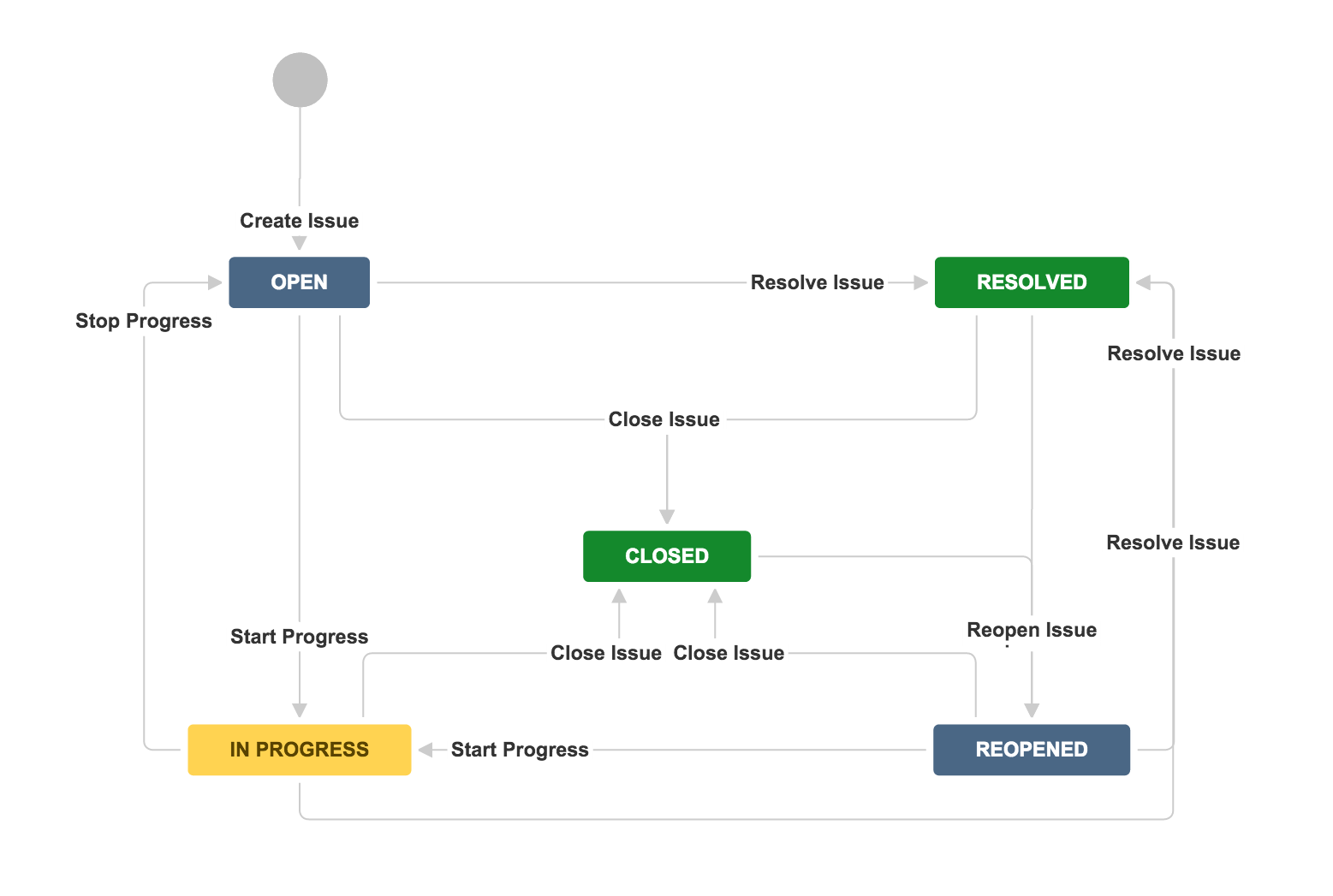Simple State Machine in Swift
by Lukas Kukacka
Our programs often use State Machines even though we might not even realise it.
How often do we have something called State and associated rules how states can change? Well there we most likely have a State Machine.
Jira Ticket example
Let’s take a Ticket in issue tracking tool Jira as an example of a State Machine. Each Ticket can have multiple states and states can change only following a set of rules according to Default workflow diagram.
Ticket can transition states following these rules:
- Open ticket cannot be Reopened.
- In Progress ticket cannot be Closed without first being Resolved.
- Resolved ticket cannot be put In Progress without first being Reopened.
- and so on…
Instead of writing all conditions here, it can be better expressed using the following diagram:
Image taken from Jira: Working with workflows
Show me the code
There are existing libraries for State Machine implementation in Swift, some of them very sophisticated and advanced. But often a simple solution is just enough…
StateMachine protocol
protocol StateMachine {
associatedtype State: Hashable
var state: State { get }
/// States transitions definition.
/// Must contain set of allowed next states for each state.
static var stateTransitions: [State: Set<State>] { get }
func canTransition(to nextState: State) -> Bool
mutating func transition(to nextState: State)
}A state machine is defined using StateMachine protocol. Let’s have a closer look…
associatedtype State: HashableThis is a type representing a State of a state machine. This will most likely be an enum. It is Hashable so it can be stored in Set of allowed state transitions.
var state: StateAccessor to current state of a state machine. Every state machine must have a state at all times.
static var stateTransitions: [State: Set<State>]This is the main magic behind our state machine: its state transition table. For each possible state, it defines what are the next states the state machine is allowed to transition to. It is basically code definition of the state diagram above.
func canTransition(to nextState: State) -> BoolDetermines whether the transition to next state candidate is allowed from current state.
mutating func transition(to nextState: State)Performs the transition of a state machine to next state. It is marked as mutating because it mutates the state.
Extension with default implementation
extension StateMachine {
static func isStateTransitionAllowed(from state: State, to nextState: State) -> Bool {
guard let validNextStates = self.stateTransitions[state] else {
fatalError("No transitions for \(state) defined in stateTransitions")
}
return validNextStates.contains(nextState)
}
func canTransition(to nextState: State) -> Bool {
return type(of: self).isStateTransitionAllowed(from: self.state, to: nextState)
}
}The extension provides default implementation of canTransition(to:). By default does the expected: state transition is allowed when stateTransitions allows it.
Example implementation
struct JiraTicket: StateMachine {
let identifier: String
init(identifier: String) {
self.identifier = identifier
}
// MARK: StateMachine
enum State: CaseIterable {
case open
case reopened
case inProgress
case resolved
case closed
}
private(set) var state: State = .open
static let stateTransitions: [State: Set<State>] = [
.open: [.inProgress, .resolved, .closed],
.reopened: [.inProgress, .resolved, .closed],
.inProgress: [.open, .resolved],
.resolved: [.reopened, .closed],
.closed: [.reopened]
]
mutating func transition(to nextState: State) {
precondition(self.canTransition(to: nextState), "Invalid state transition (\(self.state) -> \(nextState))!")
self.state = nextState
}
}The example implementation is pretty straightforward.
enum Staterepresents all possible states of a ticket.stateTransitionsis defined with all possible transitions.transition(to:)performs the state transition.- It changes value of a private variable.
- There is a
preconditionto check if the transition is valid. This implementation considers invalid state transition being a programmer’s error.canTransition(to:)should always be consulted first before changing the state.
Usage
var ticket = JiraTicket(identifier: "XX-123")
ticket.transition(to: .inProgress)
// do something
ticket.transition(to: .resolved)Ticket can transition states when mutable (defined as var).
let ticket = JiraTicket(identifier: "XX-123")
ticket.transition(to: .inProgress) // ERROR: Cannot use mutating member on immutable valueBecause the transition(to:) is mutating, it cannot be called on immutable ticket defined using let.
Like the article, got a comment or found an issue? Get in touch via Twitter .
Subscribe via RSS

